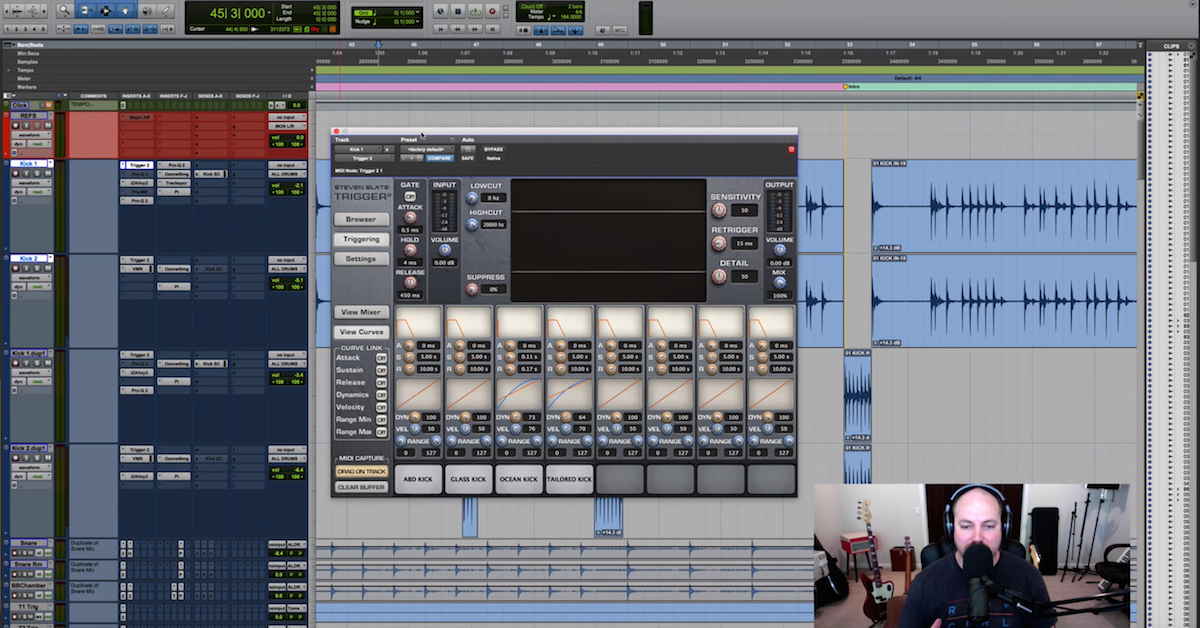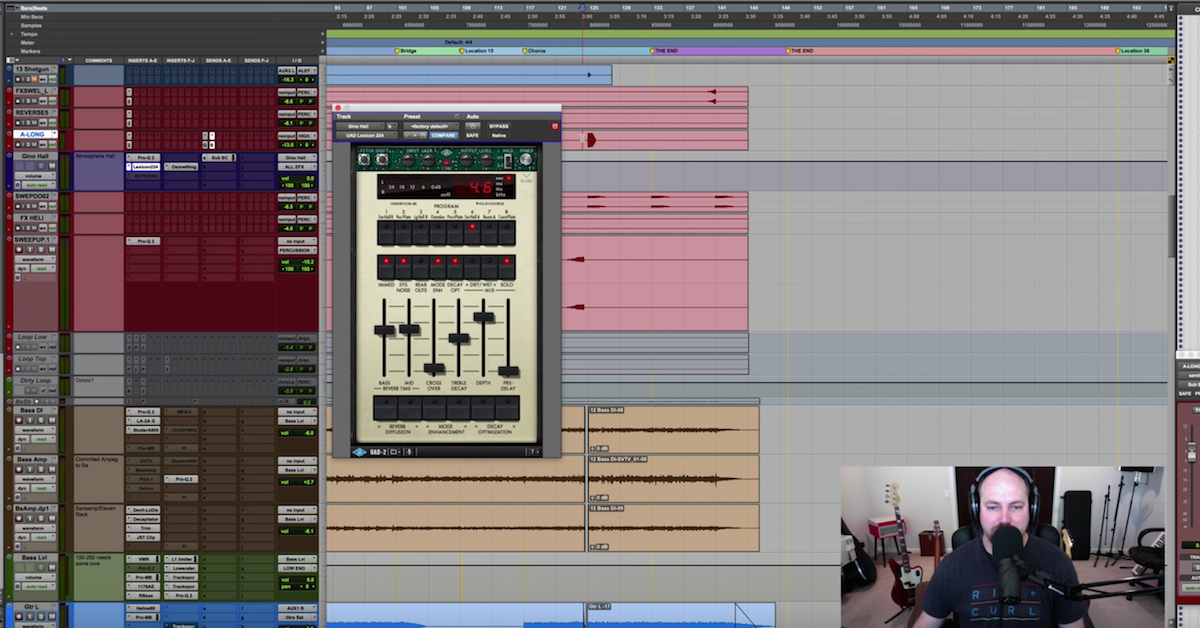Tips for Improving Your Band’s Stage Performance
Article Content
A good live show starts long before the night of the gig. There are countless hours of practice and preparation.
Hey, no one ever said being a rock star would be easy.
There are a lot of little things you can do to improve your live show. Some of them are skills that take years to develop and some are as simple as buying the sound engineer a coffee.
Practice Makes Perfect
It may seem obvious, but the first thing you need to do is to practice — a lot. It doesn’t count if you play the song by yourself in your bedroom. You need to get the band together and practice your whole set in the same room.
There’s no rule that says you have to play your songs exactly as they are on your record. Feel free to experiment and find cool moments in each song that work well live. Simple things like extending an intro to fit a talk set or doubling the bridge so you can teach the crowd to sing along go a long way in improving crowd interaction.
Part of making cool moments is letting different instruments take the lead. It doesn’t have to be a solo, but different instruments should be the focus at different times. Maybe it’s a particularly good drum groove or bass riff, either way, let it have its moment. Don’t muck it up with fancy guitar licks or vocal runs. Your job is to serve the song.
Just remember to take it easy with the extended intros, bridges and solos. No one wants to sit through 6 minutes of Mustang Sally. Sure, live shows are about “experiencing the moment”, but some of us have to work in the morning.
It’s not enough to just rehearse the songs, though. You need to practice the intros, the talk sets, the drum solo — everything. Knowing what you’re going to say and when you’re going to say it, is just as important as nailing the big finale.
You don’t need every second of the night planned out. You should always leave room to react to your audience and live in the moment, but that’s no excuse to show up to a gig unprepared.
Show Prep
A good live show doesn’t happen by accident: it takes planning, communication and preparation.
After booking the gig, you should put together an input list and a stage plot to send to the production staff at the venue. The input list is a list of every mic and/or line you’ll need for the show and the stage plot is an image of how you plan to set up on stage.
The more the production staff knows about your show ahead of time, the more prepared they’ll be, which leaves you with more time for soundcheck and dealing with unexpected problems.
A few days before the show, make sure all of your gear is in proper working order. Sure, a noisy guitar amp isn’t the end of the world, but what if your keyboard doesn’t work and you can’t do that one song that the guy from Sony really likes.
In the same spirit, be sure to apply fresh guitar strings, drum heads, and wireless batteries before the show. With guitar strings, try not to change them the day of the gig, otherwise, you’ll be stuck tuning all night.
Pre-Show
On the day of the gig, make sure you arrive early with plenty of time to set up. Introduce yourself to the venue staff and make sure they have your input list and stage plot. Bring a few hard copies, just in case.
After touching base with the production staff, set your gear up, tune your instruments, and dial in your tone. It doesn’t do you any good to show up early if the drummer drinks three beers and smokes five cigarettes before they put their kit together. The more time for soundcheck the better you’re going to sound.
After getting set up, make sure you keep your amps at a reasonable volume. It may not be what you want to hear, but loud guitar amps are going to make your show sound worse, not better. If for some reason you’re one of those guitar players who believe it’s impossible to get a proper tone without cranking your amp up to 11, at least do everyone a favor and point the amp away from the audience. You’ll still be able to hear it on stage, but it won’t be quite so overpowering.
Remember, the “sound guy’s” job is technically called live sound reinforcement. It’s the engineer’s job to reinforce the sound on the stage so that everyone in the venue can hear it. If your amp is so loud that they can hear it at the bar, the engineer is going to mute you in the mains. Three words: TURN IT DOWN.
The same goes for monitor mixes. The louder the stage mix, the worse it sounds to your biggest fans in the front row. If you and your bandmates typically need your monitors really loud, you may want to invest in some in-ear monitors to help reduce the stage volume and clean up your overall sound.
Speaking of bringing your own gear, many vocalists like to bring their own microphone. Every venue worth their salt will have a tried-and-true Shure SM58 for you to use, but some vocalists prefer the sound of a specific mic for their voice. Plus, would you really want to put your mouth on that mic? It’s like kissing 100 gnarly band dudes all at once. It permanently smells like PBR and there’s still lipstick on it from that one show last month.
When you’re finished setting up, do a quick once-over and make sure you didn’t forget the acoustic guitar that only gets used in one song, the iPod for the intro music, or any other seldom used instruments.
Soundcheck
Hopefully, your gig has a scheduled soundcheck. This is a luxury, not a necessity.
Most people think soundcheck is when the engineer dials in the front of house mix, and while that’s true, if you’re in the band this is just as much your time as theirs.
After the engineer is done setting their mix, make sure each of you takes time to confirm that you can clearly hear everything you need in your wedge while the whole band is playing.
After soundcheck, be sure to check with the production staff to make sure they didn’t have any problems on their end and give them a set list. It’s also a good idea to mark who’s singing each song, any instrument changes and any special notes.
This is your chance to let the Front of House engineer know about any special “moments” in your set. Maybe one song calls for a particularly wet vocal or a specific delay. Don’t go crazy with the special notes, but the sound crew will usually appreciate knowing what you want it to sound like.
Show Time
Once you hit the stage, your band needs to be a well-oiled machine. Nothing is worse than seeing a band walk on stage and stand there in silence while they wait for the guitar player to get their drink from the bar. As soon as the house music stops and the lights go down, you need to be ready to rock.
That goes for your entire set too. You need to maximize every second of your stage time. Try to minimize the amount of time you spend tuning. If you do have to tune your guitar, use a pedal with a true bypass so the crowd doesn’t have to hear it. Try to build natural breaks into your set when the guitarists need time to tune so they can do it without interrupting the show.
That goes for instrument changes too. Sure, you could just bring another guitar for all of those songs in drop-D, but it doesn’t save you any time if you have to fumble with your axe between every song.
If you’re having problems with your monitor mix, try to get the engineer’s attention as soon as possible. Most engineers prefer that you ask for changes over the mic, instead of using vague hand gestures.
When it comes time for talk sets, keep it simple. Don’t have long, drawn out conversations with the audience and don’t ask them how it sounds.
I know this might seem obvious, but don’t yell at, demean, or boss the audience around in any way. Don’t get mad at them if they aren’t coming up to the front, just be more entertaining.
Similarly, don’t beg the audience. Don’t try to entice them to come up to the front of the stage. It’s just sad. If they wanted to be that close, they would be.
Don’t talk about mistakes, or tech problems, or how there’s a weird buzzing in your monitor either. Now is not the time for that. If you mess up, just keep going.
The only wrong note is a note played without confidence.
If something does happen to go wrong during the show, like a technical difficulty, it’s your job to make sure the audience has no idea. Roll with the punches. The show must go on.
Almost Home
Alright, so you made it through the first few songs, but there are still plenty of ways to screw this up.
Don’t get too drunk. Sure, it’s fun to act like a rockstar, but they can still play really well when they’re loaded. You don’t want to sound sloppy — save the jägerbombs for the after show.
Don’t just stand there. Do something. Part of a live concert is the energy, not just the performance. No one pays to watch Slash play sitting down. You want to see him shredding a wicked solo with his tongue sticking out and his foot propped up on the monitor wedge as pyrotechnics go off. It’s all about the energy!
OK, so maybe you’re not Slash, but you should still mix things up a bit. Don’t stand in the same place doing the same three moves over and over again for 90 minutes. You don’t want to sacrifice performance for showmanship, so save the fancy stuff for the easy parts, and let your solos speak for themselves.
At the end of your set before the last song, be sure to thank the venue and staff, plug your social media and don’t forget to tell the audience your name!
After finishing your last song, don’t linger around thanking people on stage waiting for the audience to ask for an encore. Either exit the stage or start breaking down your gear as quickly as possible. Just make sure you check with Front of House before unplugging anything or you could cause a nasty pop in the sound system.
After your set, be sure to stick around the merch booth and introduce yourself to your fans. Taking 10 minutes to bond with fans after the show is a great way to ensure your next gig is packed.
Most importantly, whether it’s while advancing the show, in the middle of the guitar solo, or as you’re taking photos with fans at the end of the night — just be yourself. Be real. Your live show is the perfect opportunity to make an honest, genuine connection with people, so do it.
After all, isn’t that what this is all about?





